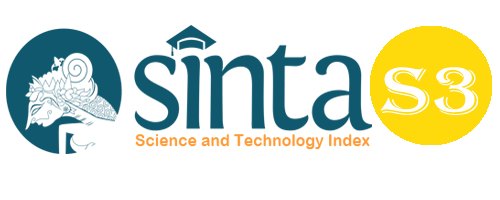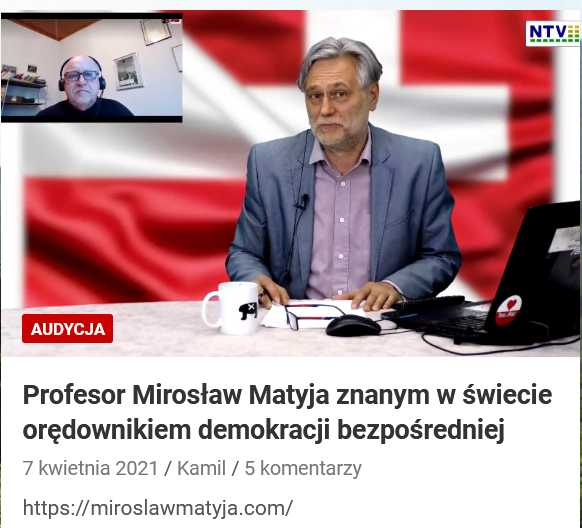An Analysis of Students Motivation in Online Learning Based on Realistic Mathematical Comic Videos
Abstract
In this era of revolution 4.0, it is hoped that everyone will be active in managing their knowledge through digital media. Digital media needs to be well designed attractive. This can have an impact on motivation and learning outcomes, especially in the field of education. In online learning, digital media is an alternative in helping the learning process. Therefore a qualitative research was conducted. The subjects of this study were seventh grade students of SMP HKBP Lubuk Pakam for the 2020/2021 Academic Year who applied online learning assisted by realistic mathematics comic videos. While the object of this study is learning motivation so that the purpose of this study to analyze the learning motivation of these students. Based on the results of the provision of a learning motivation questionnaire, it was found that the average learning motivation of students who were taught using realistic mathematics comic videos in online learning was high which was assessed based on six indicators, namely responsibility, trying to excel, liking challenges, independence, fortitude, and resilience. This is a positive attitude that supports efforts to improve learning outcomes, especially in online learning.
Keywords
Full Text:
PDFReferences
Azhar, A.A., and Sikumbang, A.T. (2018). Students’ Trends in Islamic Communication Postgraduate in 2010-2016 State Islamic University of North Sumatera (UINSU). Budapest International Research and Critics Institute-Journal (BIRCI-Journal). P. 206-214.
Beheshti, Mobina., Et. al. (2018). Characteristics of instructional videos. World Journal on Educational Technology: Current Issues. 10 (1). pp. 61-69.
Buzzetto-More, Nicole. (2015). Student Attitudes Towards The Integration Of YouTube In Online, Hybrid, And Web-Assisted Courses: An Examination Of The Impact Of Course Modality On Perception. MERLOT Journal of Online Learning and Teaching. 11 (1). pp. 55-73.
Dwi Arinii, Fitri, Abdul Salim Choiri, and Sunardi. (2017). The Use of Comic As A Learning Aid to Improve Learning Interest of Slow Learner Student. European Journal of Special Education Research. 2 (1). pp. 71-78.
Georgaka, Angeliki Deligianni and Ourania Pouroutidi. (2016). Creating Digital Comics to Motivate Young Learners to Write: A Case Study. Research Papers in Language Teaching and Learning. 7 (1). Pp. 233-263.
Hadijah, Sitti. (2016). Teaching By Using Video: Ways to Make It More Meaningful in EFL Classrooms. Proceedings of the Fourth International Seminar on English Language and Teaching (ISELT-4). pp. 307-315.
Lestaria, Laras and Edy Surya. (2017). The Effectiveness of Realistic Mathematics Education Approach on Ability of Students' Mathematical Concept Understanding. International Journal of Sciences: Basic and Applied Research (IJSBAR). 34 (1). pp. 91-100.
Lestari, Witri and Yhohan Ady Chandra. (2018). Development of Mathematical Comic-Strip Application as a Mobile Learning Media-Based Learning. Journal of Mathematics Education (JME). 3 (2). pp. 54-59.
Mendoza, Gia Lenn L., Lawrence C. Caranto, and Juan Jose T. David. (2015). Effectiveness of Video Presentation to Students' Learning. International Journal of Nursing Science. 5 (2): 81-86.
Nopriani Lubis, Jumaita, Asmin Panjaitan, Edy Surya, and Edi Syahputra. (2017). Analysis Mathematical Problem Solving Skills of Student of the Grade VIII-2 Junior High School Bilah Hulu Labuhan Batu. International Journal of Novel Research in Education and Learning. 4 (2), pp. 131-137.
Özdemira, Emine and Devrim Üzela. (2012). Student Opinions On Teaching Based On Mathematical Modeling. Procedia - Social and Behavioral Sciences. 55. pp. 1207-1214.
Panhuizen, Marja Van den Heuvel and Paul Drijvers. (2014). Realistic Mathematics Education. Encyclopedia of Mathematics Education. pp. 521-534.
Ulya, H., Kartono, and A. Retnoningsih. (2014). Analysis of Mathematics Problem Solving Ability of Junior High School Students Viewed From Students' Cognitive Style. International Journal of Education and Research. 2 (10). pp. 577-582.
Yousef, Ahmed Mohamed Fahmy, Mohamed Amine Chatti, and Ulrik Schroeder. (2014). The State of Video-Based Learning: A Review and Future Perspectives. International Journal on Advances in Life Sciences. 6 (3 & 4). pp. 122-135.
Muhammad Thosimin. (2014). Pengaruh Intensitas Mengikuti Dzikir Burdah Terhadap Kesehatan Mental Santri Pondok Pesantren Al-Fithrah Meteseh. Skripsi, IAIN Walisongo. Diakses dari eprints.walisongo.ac.id.
Parsudi Suparlan. (1980). Culture and Fertility: The Case of Indonesia. Singapore: The Institute of Southeast Asian Study.
R. Seokmono. (1973). Sejarah Kebudayaan Indonesia 2. Yogyakarta: Kanisius.
Rifyal Ka’bah. (1999). Dzikir dan Do’a dalam Al-Quran. Jakarta: Paramadani.
Simorangkir, F.M.A., and Sembiring, R.K.B. (2018). Effectiveness of Helped Mathematical Learning Media of Lectora Inspire on The Number Sense Ability of Fifth Grade Students of Elementary School in Substrate Materials. Budapest International Research and Critics Institute-Journal (BIRCI-Journal). P. 352-358
Sitorus, H.V., et al (2019). The Effect of Learning Strategy and Thinking Ability on The Students’ Learning Outcomes in Economics Subject of XI Social Students in Senior High School State 1 in Pematang Siantar. Budapest International Research and Critics in Linguistics and Education (BirLE) Journal. P. 451-460.
Sari, A. F., Rusnaini, Rejekiningsih, T. (2019). The Concept of Tolerance among Religious Community by the Religious Activists of Interfaith Community and Pantura Belief (Tali Akrap). Budapest International Research and Critics Institute-Journal (BIRCI-Journal), 132-142.
Sulasman, M. Hum. (2014). Metodologi Penelitian Sejarah; Teori, Metode, dan Contoh Aplikasi. (Bandung: CV. Pustaka Setia)
Ulin Nuha. (2015). Shalawat Burdah. Jakarta: Mutiara Media.
DOI: https://doi.org/10.33258/birci.v3i4.1452
Article Metrics
Abstract view : 576 timesPDF - 216 times
Refbacks
- There are currently no refbacks.

This work is licensed under a Creative Commons Attribution-ShareAlike 4.0 International License.

This work is licensed under a Creative Commons Attribution-ShareAlike 4.0 International License.

_.gif)

















_.gif)



